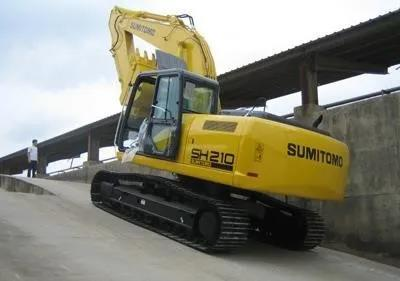
- English
- 简体中文
- Español
- Português
- русский
- Français
- 日本語
- Deutsch
- tiếng Việt
- Italiano
- Nederlands
- ภาษาไทย
- Polski
- 한국어
- Svenska
- magyar
- Malay
- বাংলা ভাষার
- Dansk
- Suomi
- हिन्दी
- Pilipino
- Türkçe
- Gaeilge
- العربية
- Indonesia
- Norsk
- تمل
- český
- ελληνικά
- український
- Javanese
- فارسی
- தமிழ்
- తెలుగు
- नेपाली
- Burmese
- български
- ລາວ
- Latine
- Қазақша
- Euskal
- Azərbaycan
- Slovenský jazyk
- Македонски
- Lietuvos
- Eesti Keel
- Română
- Slovenski
- मराठी
Precautions for correct walking operation
2022-11-14
When the excavator is walking, the working device should be put away as close as possible to the center of the body to maintain stability; the final drive should be placed behind to protect the final drive.
Avoid driving over obstacles such as tree stumps and rocks as much as possible to prevent the track from twisting; if you must drive over an obstacle, make sure that the center of the track is on the obstacle.
When passing the mound, always use the working device to support the chassis to prevent the vehicle body from shaking violently or even tipping over.
Stopping the engine on a steep slope for a long time at idling speed should be avoided, otherwise it will cause poor lubrication due to the change of the oil level angle.
Long-distance travel of the machine will cause high temperature inside the roller and travel motor assembly due to long-term rotation, resulting in decreased oil viscosity and poor lubrication. Therefore, it should be shut down frequently to cool down and prolong the life of the lower body.
Do not excavate near the driving force of walking, otherwise the excessive load will cause early wear or damage of the final drive, crawler and other lower parts.

When walking uphill, the drive wheel should be behind to increase the adhesion of the track on the ground.
When walking downhill, the driving wheel should be in front, and the upper track should be tightened to prevent the car body from sliding forward under the action of gravity and causing danger when parking.
When walking on the slope, the working device should be placed in the front to ensure safety. After parking, gently insert the bucket into the ground and put the block under the track. When turning on steep slopes, slow down and turn the right track backwards when turning left to reduce the risk of turning on a slope.



